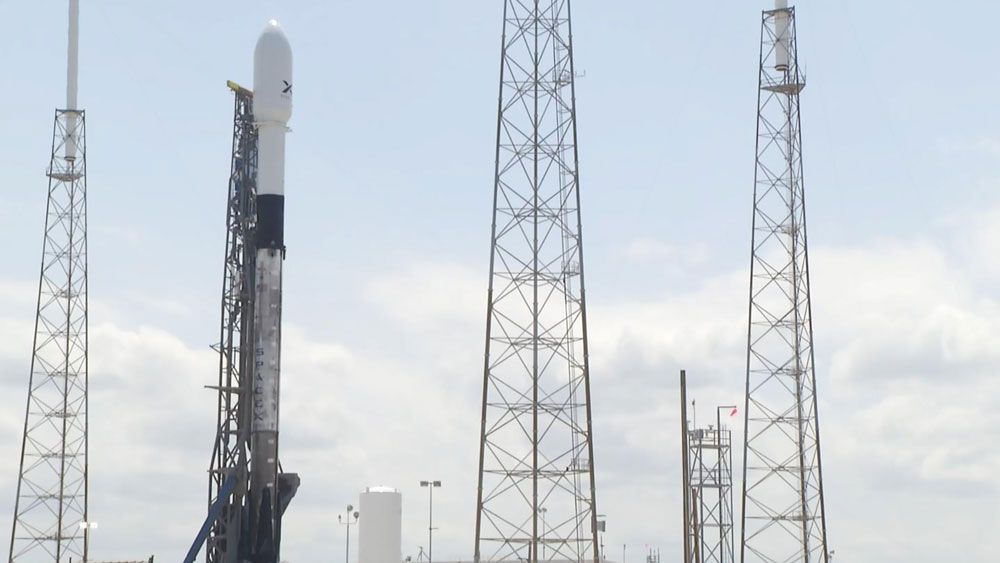OHB, which started as a ship-maintenance business, doesn’t want to rely on the aerospace giants anymore.



Investors shouldn’t underestimate the importance of launching people into space, Morgan Stanley said in a research report released Tuesday.
The Wall Street investment bank expects communication satellites, Earth observation technology and transportation to be the economic drivers of a space economy, but investors should not underestimate human space exploration as a “critical enabler of public will.”


Spaceflight company SpaceX is set to launch 60 communications satellites into orbit today as the basis for a web of spacecraft designed to provide global Internet access. But many astronomers worry that such ‘megaconstellations’ — which are also planned by other companies that could launch tens of thousands of satellites in the coming years — might interfere with crucial observations of the Universe. They fear that megaconstellations could disrupt radio frequencies used for astronomical observation, create bright streaks in the night sky and increase congestion in orbit, raising the risk of collisions.
Researchers fear that plans to send tens of thousands of communications satellites into orbit will disrupt scientific observations of the Universe.

Burning Garbage
The satellite will launch centimeter-long pellets that will incinerate upon re-entering Earth’s atmosphere. From the ground, they’re expected to look similar to slow-moving shooting stars and will take anywhere from three to ten seconds to burn away, Space.com reports.
“With this launch, we are a step closer to realiz[ing] the man-made shooting star,” Astro Live Experiences CEO Lena Okajima said, per Space.com. “Please look forward to the world’s first demonstration we are aiming [for] in 2020, which will be a major milestone for ALE.”

SpaceX launched 60 mini satellites Monday, the second batch of an orbiting network meant to provide global internet coverage.
The Falcon rocket blasted into the morning sky, marking the unprecedented fourth flight of a booster for SpaceX. The compact flat-panel satellites—just 575 pounds (260 kilograms) each—will join 60 launched in May.
SpaceX founder and chief executive Elon Musk wants to put thousands of these Starlink satellites in orbit, to offer high-speed internet service everywhere. He plans to start service next year in the northern U.S. and Canada, with global coverage for populated areas after 24 launches.

New satellites for SpaceX’s Starlink broadband network set for launch Monday from Cape Canaveral will debut several performance and safety upgrades, but they do not include changes to reduce the brightness of the satellites, a modification SpaceX says it will introduce on future Starlink craft to mitigate their impacts on ground-based astronomy.
The 60 Starlink satellites awaiting launch Monday will join 60 others launched in May. SpaceX says 1,440 of the flat-panel satellites are needed to provide Internet service over the “populated world,” a service level the company says could be achieved after 24 launches.
The Starlink network could offer service for parts of the United States and Canada after six launches, according to SpaceX.

Seattle-based Spaceflight says it’s handling the pre-launch logistics for a Japanese satellite that’s designed to spray artificial shooting stars into the sky.
Tokyo-based ALE’s spacecraft is just one of seven satellites due to be sent into orbit from New Zealand as early as Nov. 25, aboard a Rocket Lab Electron launch vehicle.
It’ll be the 10th Electron launch, earning the nickname “Running Out of Fingers.” It’ll also be the first launch to test the guidance and navigation hardware as well as the sensors that Rocket Lab will eventually use to help make the Electron’s first stage recoverable.

This is yet another glaring example of the innovative spirit of Silicon Valley. The startup has been successfully testing the novel idea on its El Camino Real spacecraft — launched on a Russian Soyuz rocket in July 2019. Momentus will continue to perform simulations on its spacecraft for the next few months to gather enough data to compare it with the results of the ground tests to validate the proper functioning of the new system.
It’s spacecraft, El Camino Real, is a 16-unit CubeSat integrated by Astro Digital — a spacecraft manufacturer and geospatial data analysis company based out of California as well. Momentus has already secured funding of $34 million funding to develop two shuttles, Vigoride and Vigoride Extended, which will maneuver satellites between orbits.
The most prominent application for this is when new satellites are deployed in orbits via rockets. When the former is dropped off in orbits, they can be moved to optimal positions using this technology in a cheap & efficient manner. Momentus originally started off in 2018 as a transportation service for small satellites seeking rides to medium Earth, geostationary or low lunar orbit.